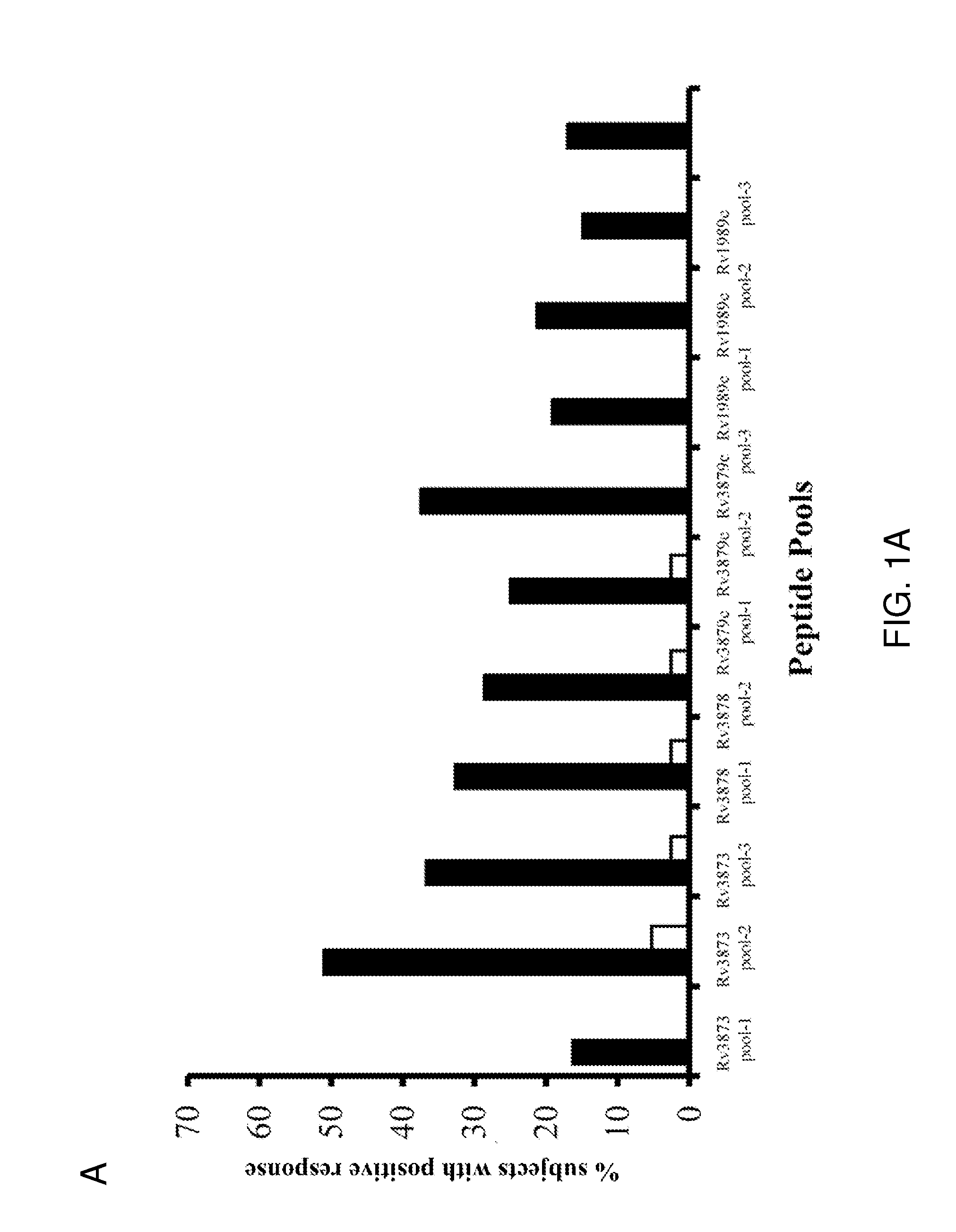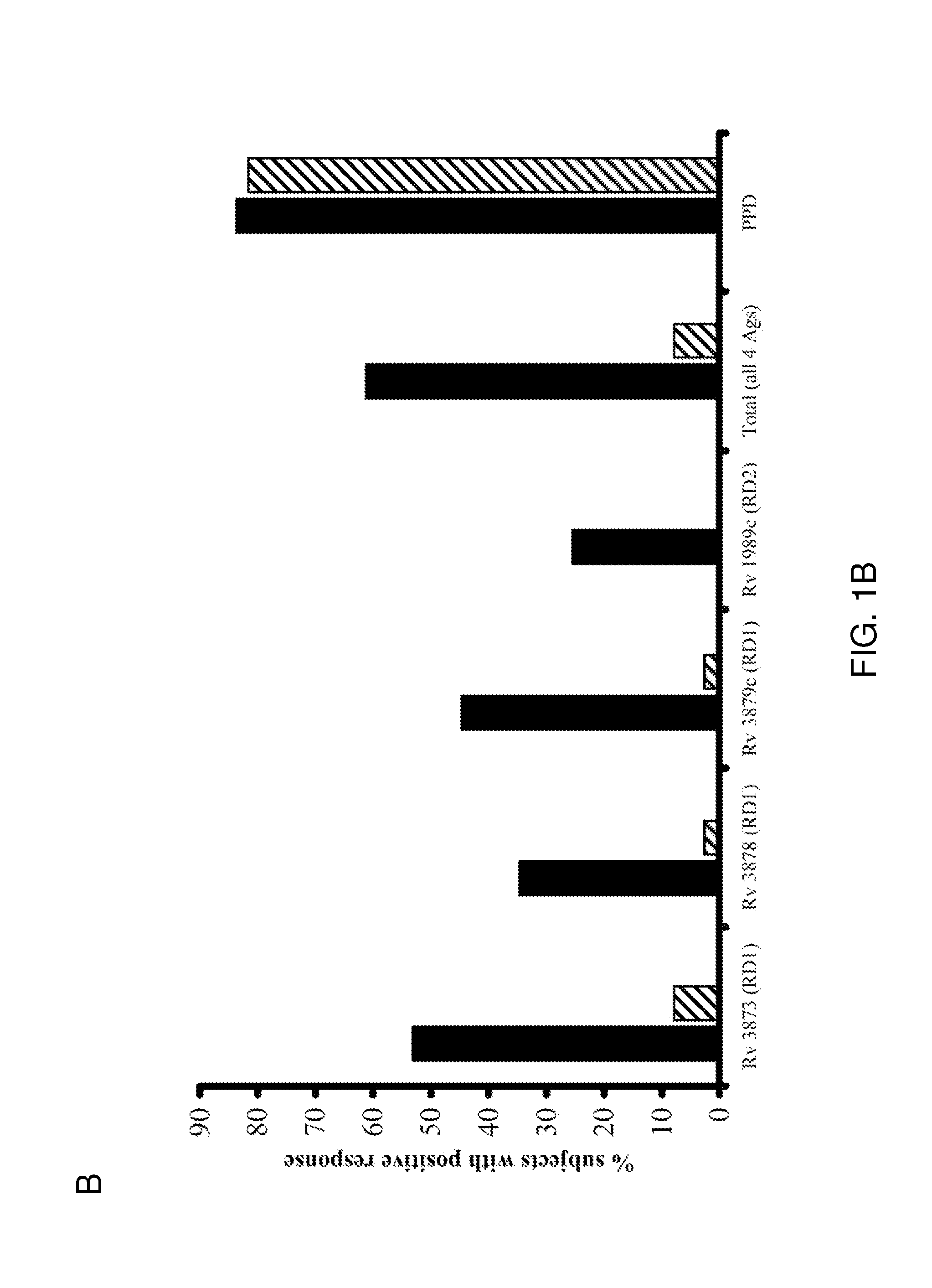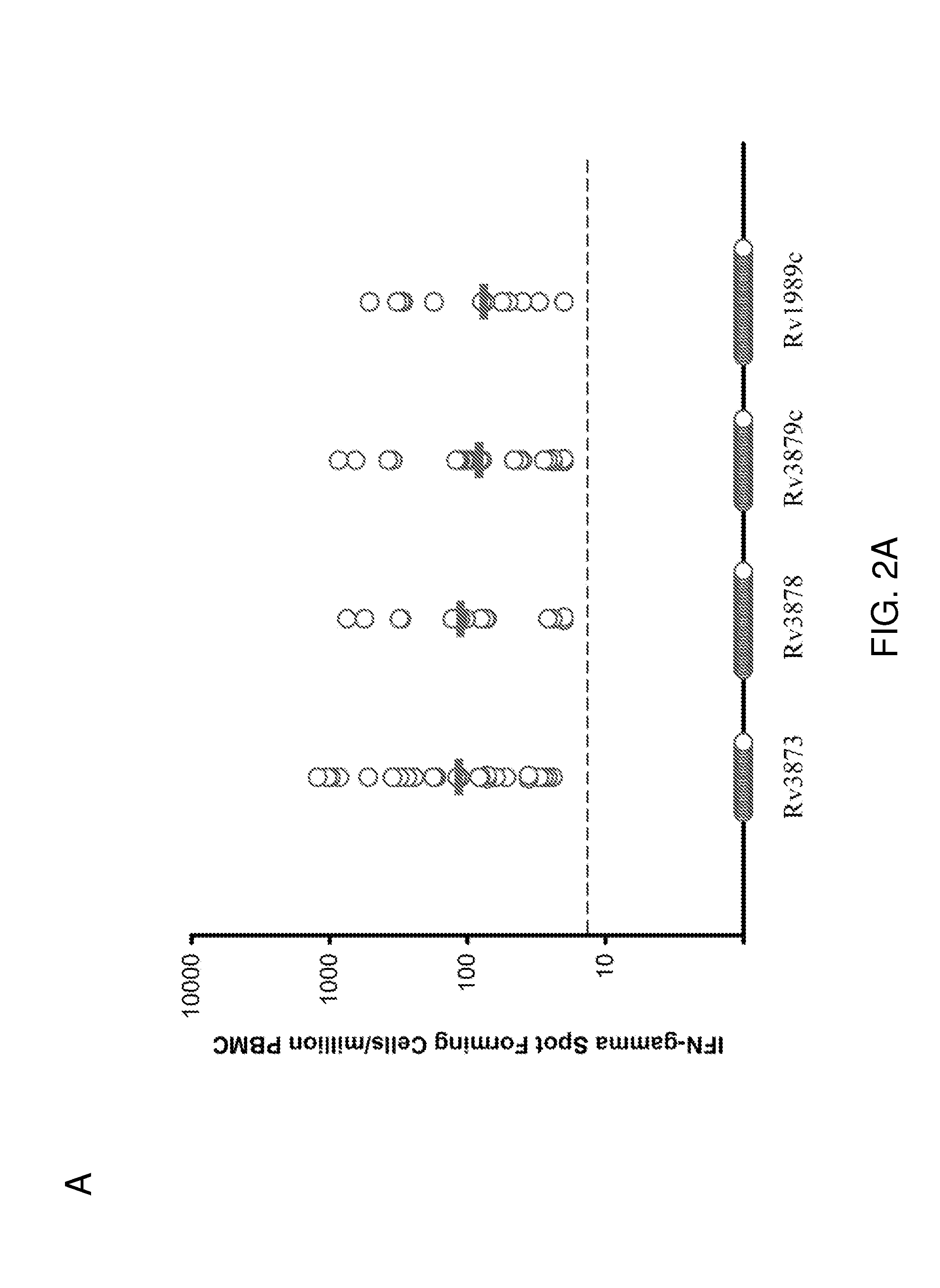Diagnostic test
a technology of mycobacterium tuberculosis and diagnostic tests, applied in the direction of snake antigen ingredients, material testing goods, bacteria antigen ingredients, etc., can solve the problems that based diagnostic tests (including in vivo skin tests) may give false negative results in immunosuppressed individuals, and achieve high sensitivity, limited sensitivity, and increased sensitivity of diagnostic tests
- Summary
- Abstract
- Description
- Claims
- Application Information
AI Technical Summary
Benefits of technology
Problems solved by technology
Method used
Image
Examples
example 1
Study Participants
[0075]All participants were recruited prospectively in London and Oxford over a 14 month period from June 2002 through July 2003. Ethical approval for the study was granted by the Harrow and Central Oxford Research Ethics Committees. The diagnoses of all 49 TB patients were bacteriologically confirmed with positive cultures for MTB from one or more clinical specimens. Patients were untreated or had received less than 2 weeks therapy at the time of venipuncture for ELISPOT assay. Control participants were healthy BCG-vaccinated laboratory personnel from regions with a low prevalence of TB and with no known exposure to MTB. All had recently tested negative by IFN-γ-ELISPOT using 38 overlapping 15-mer peptides spanning the length of ESAT-6 and CFP10, as previously described (Lalvani et al. 1997. J. Exp. Med. 186:859-865).
[0076]Epidemiological data regarding place of birth, any period of residence in higher prevalence regions and absence of TB contact was collected fro...
example 2
Demographic Characteristics of Study Participants
[0082]Demographic characteristics of the 49 culture-confirmed TB patients are shown in Table 1. 42 patients had pulmonary TB, of whom 23 were sputum smear-positive. The 7 patients with extra-pulmonary TB, comprised patients with pleural TB (n=3); lymphadenitis (n=1), miliary TB (n=2) and urinary tract TB (n=1). The patients were from a broad range of ethnicities. Demographic characteristics of BCG donors are shown in Table 1. All donors were born in regions of low prevalence for TB (Europe or Australia). None had a history of known TB contact and none had resided for more then 3 months in high prevalence regions.
example 3
IFN-γ ELISPOT Responses to Peptides from Rv3873, Rv3878, Rv3879c and Rv1989c in Culture-Confirmed Tuberculosis Patients
[0083]IFN-γ ELISPOT responses of PBMC from all 49 TB patients to the 11 peptide pools from the four antigens are summarized in FIG. 1A. The percentages of responding patients varied between 25.5% and 53.1% for the different antigens (FIG. 1B). The proportion of patients responding to peptides from each of the antigens Rv3873, Rv3879c, Rv3878 and Rv1989c was 53.1% (95% CI 39-67%), 44.7% (95% CI 31-57%), 34.7% (95% CI 22-48%) and 25.5% (95% CI 13-39%), respectively (FIG. 1B). Combining these responses, 30 of 49 tuberculosis patients responded to peptide pools from one or more antigens, giving a diagnostic sensitivity of 61.2% (95% confidence interval [CI] 46.2%-74.8%) for all peptides used together. This contrasts with the results obtained by Cockle et al. 2002 Infect. Immunol. 70:6996-7003, who found that peptides from Rv3873, Rv3878, Rv3879c, Rv1989c could together ...
PUM
| Property | Measurement | Unit |
|---|---|---|
| concentration | aaaaa | aaaaa |
| concentration | aaaaa | aaaaa |
| length of time | aaaaa | aaaaa |
Abstract
Description
Claims
Application Information
 Login to View More
Login to View More - R&D
- Intellectual Property
- Life Sciences
- Materials
- Tech Scout
- Unparalleled Data Quality
- Higher Quality Content
- 60% Fewer Hallucinations
Browse by: Latest US Patents, China's latest patents, Technical Efficacy Thesaurus, Application Domain, Technology Topic, Popular Technical Reports.
© 2025 PatSnap. All rights reserved.Legal|Privacy policy|Modern Slavery Act Transparency Statement|Sitemap|About US| Contact US: help@patsnap.com



